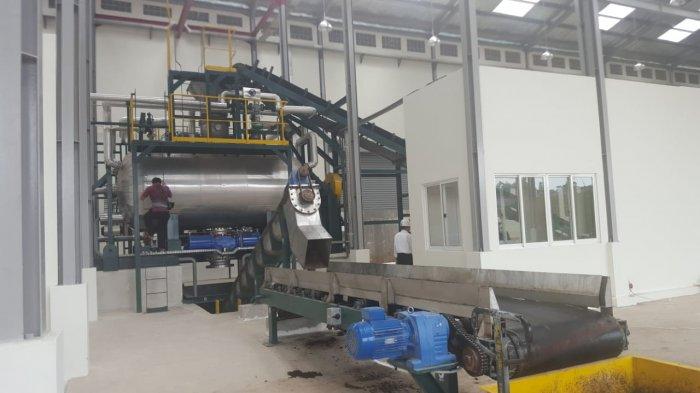To support governmental efforts in waste management, the Center of Waste Management Indonesia (CWMI) has introduced an innovative solution: the Hydrothermal Waste Treatment Technology (HWTT). Established in 2012, CWMI aims to serve the community and all stakeholders by fostering a greener, cleaner environment through integrated, technology-based waste management systems.
The Hydrothermal Waste Treatment Technology is a groundbreaking method that transforms waste into valuable products without emitting strong odors, making it suitable for solid fuel applications. Suhaemi Fattah, Director of Compliance & Government Affairs at CWMI, elaborated on the technology's development, which was a collaborative effort between the Tokyo Institute of Technology and CWMI.
"HWTT integrates three crucial processes: shredding, drying, and odor removal, all within a single operation that utilizes high-pressure saturated steam, referred to as the Multi-purpose Material Conversion System," explained Suhaemi during a recent interview.
The operational principles of HWTT are straightforward. Organic waste, including municipal refuse, agricultural by-products, sludge, and food scraps, are fed into a high-pressure steam reactor operating at temperatures between 200°C and 250°C and pressures of 1.6 to 3 MPa.
Steam from a boiler is injected into the reactor for approximately 30 to 60 minutes, and the reactor blades rotate for an additional 10 to 30 minutes to ensure thorough mixing. Following steam extraction, the resulting material is processed into a powdered form with a moisture content similar to that of the original feedstock. Drying occurs naturally through ambient air or by blowing air, typically taking 1 to 3 days.
The processed waste can yield three distinct products: solid coal-like fuel, solid and liquid fertilizers, and animal feed. Suhaemi emphasized that the high-pressure steam process does not produce harmful chemicals or retain bacteria, resulting in nearly odorless products with moisture levels below 10%. These can be utilized as fuel for boilers in electricity generation, particularly in the cement industry, or as a heat source.
The hydrothermal processing technology employs a combination of heat and water as media to convert underutilized resources into uniform products with diverse characteristics. Compared to conventional incineration technologies, HWTT offers significant advantages, including being emission-free—releasing no CO2, NOx, SOx, or particulate matter—and the ability to process wastewater for reuse as boiler feedwater.
"HWTT products are versatile, applicable as animal feed, organic fertilizers, or solid fuel alternatives to coal. In terms of solid fuel, they are cleaner than coal due to their low sulfur content," Suhaemi added.
Regarding investment and operational costs, Suhaemi noted that HWTT is considerably more economical than traditional incinerators. "Being environmentally friendly makes HWTT acceptable to the community. The operational principles are straightforward," he concluded.
As Indonesia continues to grapple with its waste crisis, technologies like HWTT represent a hopeful path toward sustainable waste management and renewable energy solutions.

